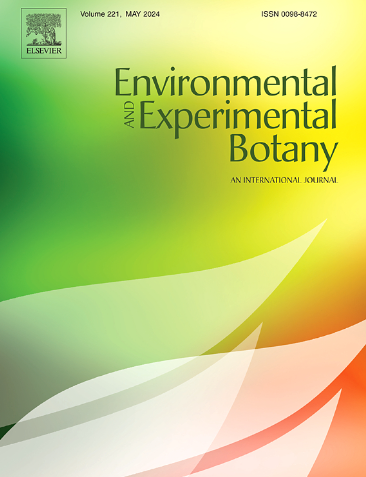营养流环境如何促进水培莴苣生长
IF 4.7
2区 生物学
Q2 ENVIRONMENTAL SCIENCES
引用次数: 0
摘要
水培法是一种利用液体营养介质的植物生长系统,但营养液流动对根系发育的影响尚不清楚。本研究通过测定不同养分流量和生育阶段的根系形态、细胞壁组成、氧化胁迫指标和养分吸收,分析养分流量对水培莴苣根系形态、抗氧化性能和多组学特性的综合影响。流动条件下,根系长度、表面积和体积显著增加,说明流动促进了根系扩张,提高了养分吸收。细胞壁成分也增加,表明流动可能通过加强细胞壁结构来支持根的生长。在氧化损伤指标增加的同时,根系也表现出较高的抗氧化酶活性,增强了对流动环境诱导的氧化应激的响应。代谢组学分析表明,血流激活了细胞分裂和信号转导相关途径。转录组学和蛋白质组学显示,与根系发育和抗逆性相关的多个基因和蛋白上调或下调,其中木质素合成途径显著富集。因此,营养液流动通过多层次调控促进生菜根系生长和抗逆性,为改善水培作物生长环境、提高产量、改善蔬菜作物品质提供理论依据。本文章由计算机程序翻译,如有差异,请以英文原文为准。
How the nutrient flow environment promotes lettuce growth in hydroponics
Hydroponics is a plant growth system that uses liquid nutrient medium, but the effects of nutrient solution flow on root development are unexplored. Here, the comprehensive effects of nutrient flow on root morphology, antioxidant properties, and multi-omics characteristics of hydroponic lettuce were analyzed via root morphology, cell wall composition, oxidative stress indicators, and nutrient uptake at different nutrient flow and growth stages measurement. Under flow conditions, root length, surface area, and volume increased significantly, indicating that flow promoted root expansion and improved nutrient uptake. Cell wall components also increased, suggesting that flow may support root growth by strengthening the cell wall structure. Although oxidative damage indicators increased, the roots also exhibited high antioxidant enzyme activity, enhancing their response to oxidative stress induced by the flowing environment. Metabolomic analysis showed that flow activated cell division- and signal transduction-related pathways. Transcriptomics and proteomics showed the upregulation or downregulation of multiple genes and proteins related to root development and stress resistance, with significant enrichment in the lignin synthesis pathway. Nutrient solution flow, thus, promotes lettuce root growth and stress resistance through multilevel regulation, providing a theoretical basis for enhancing hydroponic crop growth environments, increasing yields, and improving vegetable crop quality.
求助全文
通过发布文献求助,成功后即可免费获取论文全文。
去求助
来源期刊

Environmental and Experimental Botany
环境科学-环境科学
CiteScore
9.30
自引率
5.30%
发文量
342
审稿时长
26 days
期刊介绍:
Environmental and Experimental Botany (EEB) publishes research papers on the physical, chemical, biological, molecular mechanisms and processes involved in the responses of plants to their environment.
In addition to research papers, the journal includes review articles. Submission is in agreement with the Editors-in-Chief.
The Journal also publishes special issues which are built by invited guest editors and are related to the main themes of EEB.
The areas covered by the Journal include:
(1) Responses of plants to heavy metals and pollutants
(2) Plant/water interactions (salinity, drought, flooding)
(3) Responses of plants to radiations ranging from UV-B to infrared
(4) Plant/atmosphere relations (ozone, CO2 , temperature)
(5) Global change impacts on plant ecophysiology
(6) Biotic interactions involving environmental factors.
 求助内容:
求助内容: 应助结果提醒方式:
应助结果提醒方式:


